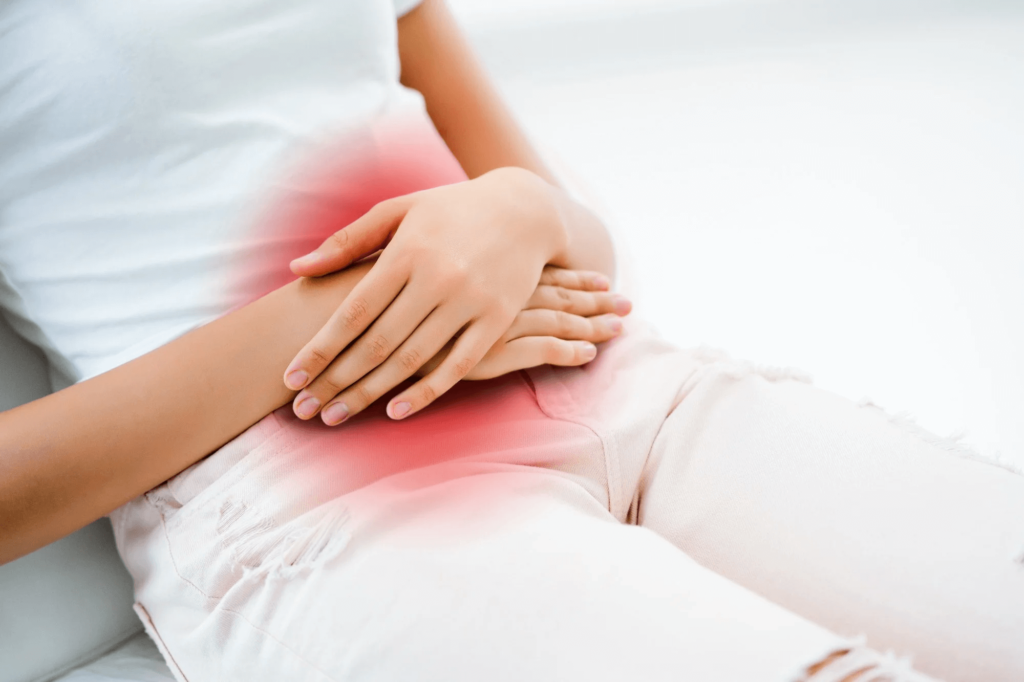Understanding and Treating Menstrual Disorders
Menstrual disorders encompass a wide range of conditions that affect the menstrual cycle, including issues such as heavy bleeding, painful periods, irregular cycles, and the complete absence of menstruation. These conditions can significantly impact a woman’s quality of life, leading to physical discomfort, emotional distress, and complications in reproductive health. Understanding the underlying causes and exploring effective treatment options is essential for managing these disorders.
Types of Menstrual Disorders
- Dysmenorrhea (Painful Periods)
- Primary Dysmenorrhea: This refers to common menstrual cramps that are not associated with any underlying health condition. It typically starts soon after a woman begins menstruating and can last throughout her reproductive years.
- Secondary Dysmenorrhea: This type of pain is caused by a specific reproductive disorder, such as endometriosis or fibroids. The pain usually starts earlier in the menstrual cycle and lasts longer than primary dysmenorrhea.
- Menorrhagia (Heavy Menstrual Bleeding)
- This condition is characterized by excessive menstrual bleeding, which can last longer than seven days or involve a loss of more than 80 milliliters of blood per cycle. Menorrhagia can lead to anemia, fatigue, and significant disruption of daily life.
- Oligomenorrhea (Infrequent Periods)
- Oligomenorrhea refers to irregular or infrequent menstrual periods, typically defined as cycles that last longer than 35 days. It can be a sign of underlying hormonal imbalances, polycystic ovary syndrome (PCOS), or other health issues.
- Amenorrhea (Absence of Menstruation)
- Primary Amenorrhea: The absence of menstruation by the age of 15 in a girl who has not yet begun menstruating.
- Secondary Amenorrhea: The cessation of menstruation for three or more months in a woman who previously had regular cycles. Common causes include pregnancy, stress, weight changes, or hormonal imbalances.
- Premenstrual Syndrome (PMS) and Premenstrual Dysphoric Disorder (PMDD)
- PMS involves physical and emotional symptoms that occur in the luteal phase of the menstrual cycle, typically resolving once menstruation begins. PMDD is a more severe form, with symptoms severe enough to interfere with daily activities and relationships.

Causes of Menstrual Disorders
The causes of menstrual disorders can vary widely depending on the specific condition. Common factors include:
- Hormonal Imbalances: Conditions like PCOS, thyroid disorders, and hyperprolactinemia can disrupt the balance of hormones that regulate the menstrual cycle.
- Uterine Abnormalities: Fibroids, polyps, and adenomyosis can cause heavy or painful periods.
- Chronic Conditions: Endometriosis, pelvic inflammatory disease (PID), and other chronic health issues can lead to menstrual irregularities.
- Lifestyle Factors: Stress, excessive exercise, and significant weight fluctuations can all affect the menstrual cycle.
- Medications: Certain medications, including contraceptives and antidepressants, can influence menstrual patterns.
- Genetic Factors: Some menstrual disorders may have a genetic component, making them more likely to occur in certain families.
Treatment Options
Treatment for menstrual disorders depends on the underlying cause, the severity of the symptoms, and the woman’s overall health and reproductive goals. Here are some common approaches:
- Lifestyle Modifications
- Diet and Nutrition: A balanced diet rich in vitamins, minerals, and healthy fats can help regulate the menstrual cycle. For example, omega-3 fatty acids and magnesium may reduce the severity of cramps.
- Exercise: Regular physical activity can help manage weight, reduce stress, and improve hormonal balance. However, excessive exercise should be avoided as it can lead to amenorrhea.
- Stress Management: Techniques such as yoga, meditation, and deep breathing can help reduce stress levels, which can positively affect menstrual regularity.
- Medications
- Nonsteroidal Anti-Inflammatory Drugs (NSAIDs): Medications like ibuprofen and naproxen can help reduce menstrual pain and heavy bleeding by inhibiting prostaglandin production.
- Hormonal Therapies: Birth control pills, hormonal IUDs, patches, or vaginal rings can regulate the menstrual cycle, reduce heavy bleeding, and alleviate severe PMS symptoms. These methods are also commonly used to manage conditions like PCOS and endometriosis.
- Gonadotropin-Releasing Hormone (GnRH) Agonists: These medications are used to treat conditions like endometriosis and fibroids by temporarily inducing menopause-like symptoms, reducing estrogen levels, and shrinking abnormal tissue growths.
- Antidepressants: For women with PMDD, selective serotonin reuptake inhibitors (SSRIs) can help alleviate mood-related symptoms.
- Surgical Interventions
- Dilation and Curettage (D&C): This procedure involves removing the lining of the uterus and is often used to treat heavy bleeding.
- Endometrial Ablation: This minimally invasive procedure destroys the lining of the uterus to reduce or stop heavy menstrual bleeding. It is not recommended for women who wish to have children in the future.
- Hysterectomy: In severe cases where other treatments have failed, a hysterectomy (removal of the uterus) may be considered. This procedure is typically reserved for women who do not wish to have children, as it results in permanent infertility.
- Myomectomy: This surgery is used to remove fibroids from the uterus, preserving the uterus and potentially improving fertility.
- Complementary and Alternative Therapies
- Herbal Remedies: Some women find relief from menstrual symptoms using herbal supplements such as chasteberry, evening primrose oil, or ginger. However, these should be used with caution and under the guidance of a healthcare provider, as they can interact with medications or have side effects.
- Acupuncture: Acupuncture has been shown to alleviate menstrual pain and regulate cycles by promoting blood flow and reducing inflammation.
- Supplements: Vitamins such as B6, E, and D, as well as minerals like magnesium and calcium, may help reduce PMS symptoms and improve overall menstrual health.

When to Seek Medical Advice
While some menstrual irregularities are normal, it’s essential to seek medical advice if you experience:
- Periods that suddenly become very irregular or stop entirely
- Heavy bleeding that requires changing pads or tampons every hour
- Severe pain that does not respond to over-the-counter pain relievers
- Symptoms of anemia, such as fatigue, weakness, or shortness of breath
- Any unusual symptoms that cause concern, such as unusual discharge or severe mood swings
A healthcare provider can conduct a thorough evaluation, including a physical exam, blood tests, and imaging studies if necessary, to diagnose the underlying cause of the menstrual disorder and recommend appropriate treatment.
Conclusion
Menstrual disorders can range from mild inconveniences to serious health concerns, but effective treatments are available. By understanding the various types of menstrual disorders and the potential causes, women can take proactive steps to manage their symptoms. Whether through lifestyle changes, medication, or surgical options, it’s possible to achieve a better quality of life and improved reproductive health.
It’s important to consult a healthcare professional to determine the most appropriate treatment plan for your specific condition. By doing so, women can take control of their menstrual health and reduce the impact of these disorders on their daily lives.







